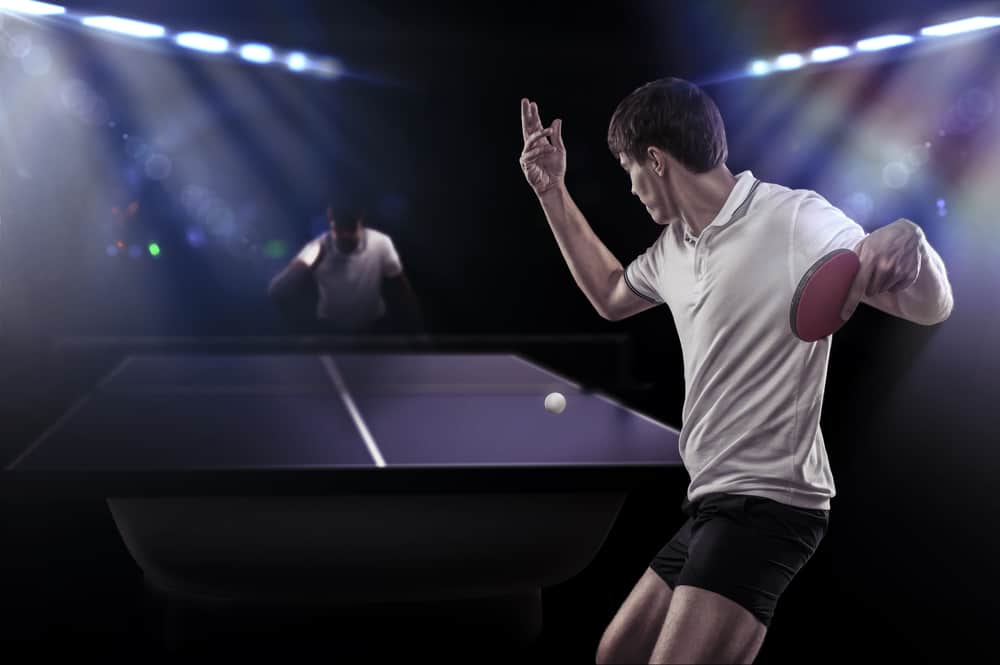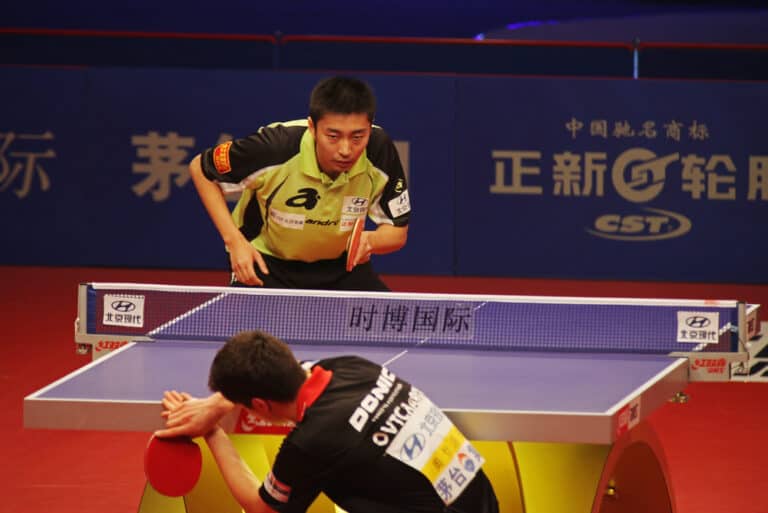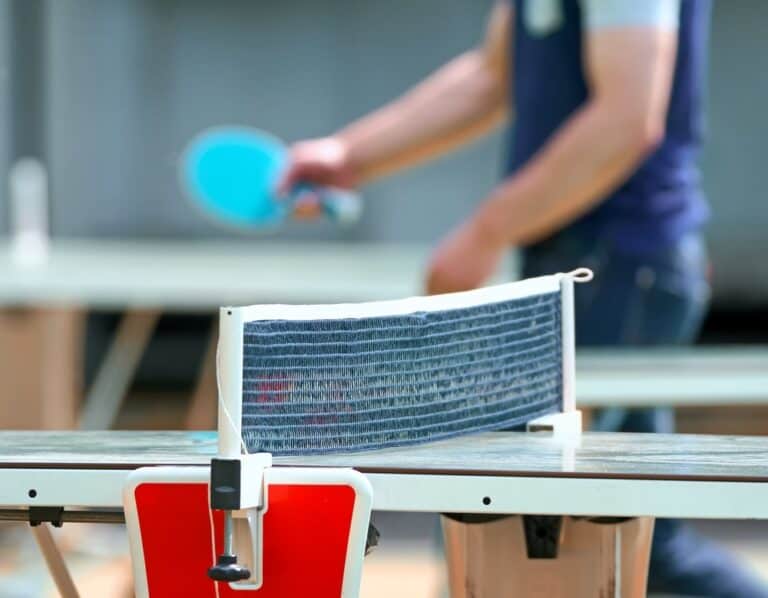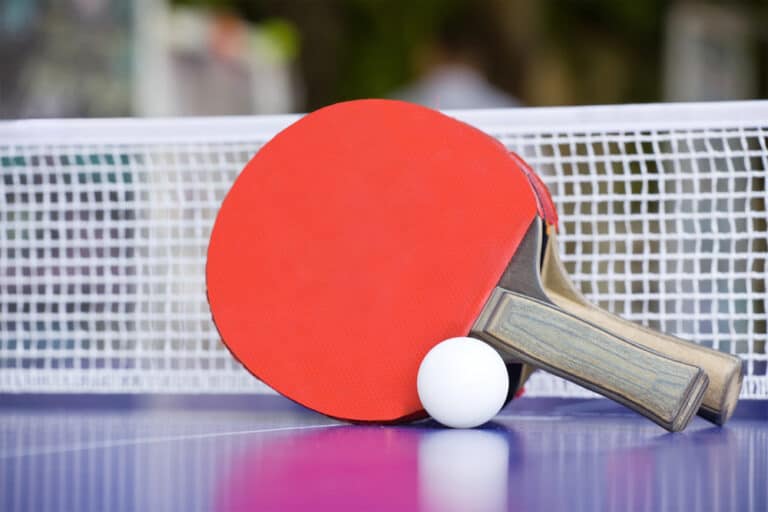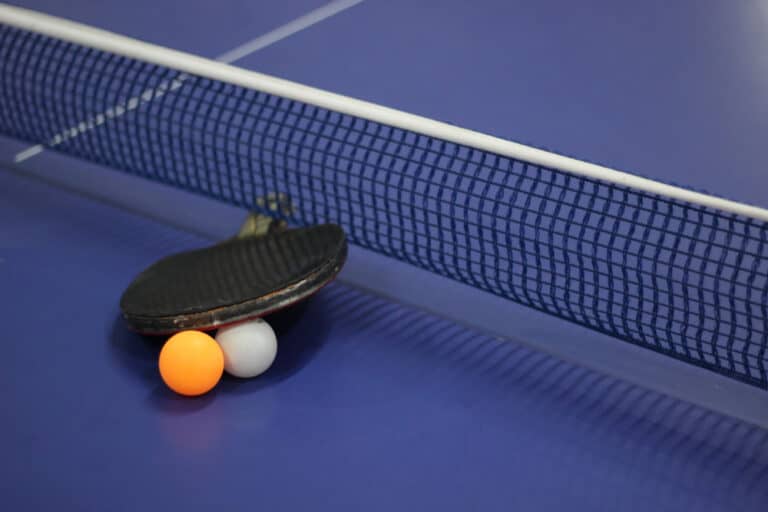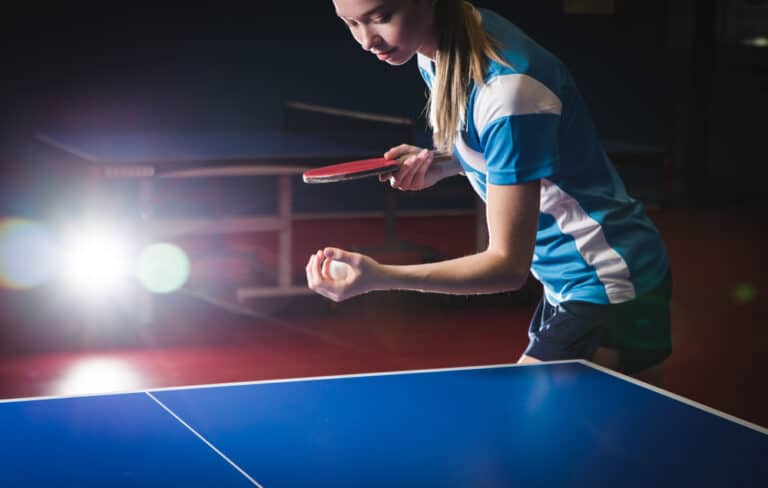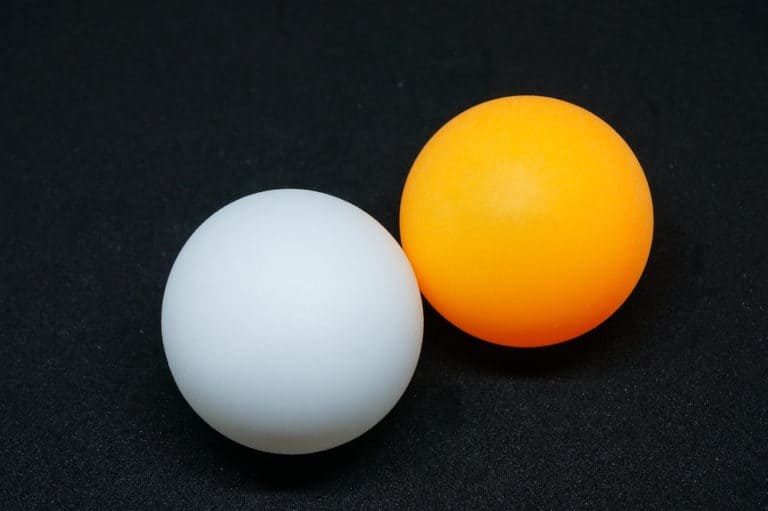Indoor Vs Outdoor Table Tennis: Is There A Difference?
If you are anything like us, you may spend countless hours on research before you commit to your new in-home asset – and in the case of table tennis tables, it certainly isn’t any different. But where should you start? Well, of course, you should start with the differences between indoor and outdoor table tennis.
The main difference between indoor and outdoor tennis tables is the materials used. Indoor tables typically are made from some form of wood product, whereas outdoor tables are made from a mixture of wood and metal. As a result, outdoor tables are more durable and weather-resistant.
By the end of this article, you will gain some insight into how indoor and outdoor table tennis differ. But how does one decide which one is best? Continue reading to find out how.
Indoor And Outdoor Table Tennis Material Difference
In short, the main difference between indoor and outdoor table tennis is the material used. Sure, there are other differences, such as pricing, but the fundamentals boil down to what it is made of. The materials used to make indoor and outdoor table tennis tables are entirely different – and for a good reason.
The difference is not because of preference on the part of the manufacturers and creators but rather because these tables require different materials. Indoor tables are constructed from materials that maintain well in stable temperatures. On the other hand, outdoor tables are built from durable materials that can withstand the elements such as extreme temperature changes, high humidity, rain, and wind.
Indoor Table Tennis Material
So what are indoor table tennis tables made from? Indoor tables can be made from a variety of materials. However, most indoor tables are typically constructed from;
- Solid wood
- Particle board
- Plywood, or
- Plastic
As many of these materials are derivatives of wood products, they can swell or disintegrate when exposed to water. It is not only wood that the elements can damage, but plastic too. Try to keep in mind that plastic is not impervious to the elements of nature either. If a strong wind hits your table during a stormy night, you may have to kiss it goodbye.
Overall, extreme temperature changes, wind and rain can warp or damage wood and plastic. So, indoor tennis tables are best left inside at all times. However, if you need to place an indoor table outside, try to limit it to a game or two here and there and be sure to bring it back inside before any rain.
Remember, indoor tables do not have corrosion resistance properties and anti-UV coatings. So the longer it is outside, the more likely damage will occur.
Outdoor Table Tennis Materials
Outdoor table tennis tables are generally made from different materials than indoor tables. So what are outdoor tables made from? Materials commonly used for outdoor tables include;
- Metal
- Concrete, or
- Wood
As you can see, you might find wood as a core component of outdoor tables. Do not be afraid when you see this, though. Outdoor tables are constructed with a wood and metal mixture, making them highly durable. In addition, after the wood and metal mixture is assembled, it is usually protected with a weatherproof coating such as melamine.
The melamine coating on these tables has a long lifespan; as a result, their warranties may be longer than those of painted tables. It is therefore not necessary to worry about your outdoor table facing the elements. Outdoor tennis tables are designed to withstand the elements all year round. For instance, many outdoor fixed table tennis tables have a play surface that is made from metal or concrete.
While the metal and concrete add extra weight to the tables, they are highly durable and resistant to the elements. Because these tables are fixed and rarely moved, most people do not mind the added extra weight.
In general, you can expect outdoor tables to last a very long time. But, of course, if need be, table tennis tables that are not anchored to the ground can be used inside too.
Indoor And Outdoor Table Tennis Cost Difference
When looking at the cost difference between outdoor and indoor tables, you are sure to see a difference. On average, indoor tables cost less than outdoor tables. The cost difference is due to the different materials used to make the tables. Indoor tables are generally made from some form of wood product, whereas outdoor tables not only have wood as a component of their tables but also metal.
Additionally, outdoor tables may have weatherproof coatings and sturdier frames. Because of the extra materials used, which naturally cost more, you will find that outdoor tables typically cost more. But, of course, this does not necessarily mean that indoor tables will always cost less than outdoor tables. Tables of higher quality, whether indoor or outdoor, will cost more.
So you might find that a higher-quality indoor table will cost more than a middle-range outdoor table. Conversely, low-quality tables will cost less. But if you choose a low-quality table, do not bank on these tables lasting for a long time. For instance, there are many plastic indoor tables on the market. While these tables win in the price department, they are more suited for casual games for a limited time.
If you are looking for more durable and long-lasting tables, it may be best to look at other options. If you want a moderate-to-professional table but cannot afford it yet, do not worry. Getting one doesn’t have to cost an arm and a leg. Opting for a second-hand table may be a good option as you can save a lot of money.
Check your local charity or pawn shop periodically to see if any table tennis tables are available. For a more modern route, visit only sites dedicated to the buying and selling of used goods. Remember that safety always comes first.
Scams can run amuck online as well as not-so-friendly people. So, be sure never to give out personal details such as your cellular number or physical address unless you have to. If you are meeting online strangers, be sure not to meet in a secluded place and have someone come with you.
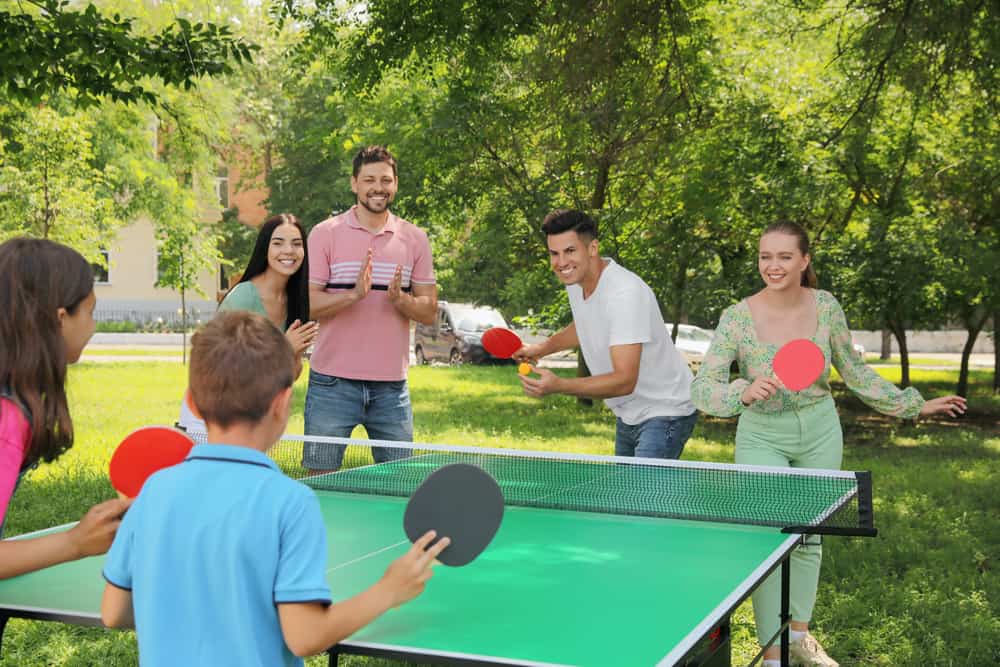
Indoor And Outdoor Table Differences In ITTF Approval
When purchasing a new table tennis table, you may want to consider its ITTF status. The International Table Tennis Federation (ITTF) governs all table tennis organizations. Not only do they organize a number of international table tennis tournaments, such as the World Table Tennis Championships, but they also oversee all the rules and regulations.
Table tennis is an official sport. As such, there are various physical properties, standards and regulations regarding equipment used in official competitions. A table approved by the ITTF is the best way to go if you want to train on a table that the professionals use or compete. If so, you will have to choose an indoor table as only indoor tables are approved by the ITTF.
The ITTF approves no outdoor tables. In any case, you do not need to purchase an approved table -especially if you just want to play for leisure. There are many good-quality tables available that do not meet ITTF standards and requirements.
Indoor And Outdoor Table Difference In Bounce
You might be surprised to learn that the ball bounces differently on indoor and outdoor tables. Indoor tables typically have a faster and higher bounce than outside tables. Why? Again, it all boils down to the materials used. Because outdoor tables are made from a wood/metal mix, the energy from the ball is absorbed, making it slower than its indoor counterparts.
Nevertheless, for most people, this is not a concern. Recreational players are unlikely to notice the difference in ball speed. However, more serious players are likely to notice the difference. This does not mean that all indoor tables have a good bounce. Remember, the better the table quality, the better the gameplay.
When it comes to bounce, the most important thing to look out for is the thickness of the playing surface. The playing surface is the upper surface of the table. Do not confuse the playing surface for the structural thickness of the table. You can have a thick structure surface and a thin playing surface. The table surface is uniformly dark and matte and has markings on it.
It is the material that the ball bounces on. The thicker the playing surface, the better. This is because thicker playing surfaces, whether indoor or outdoor, will give a more consistent bounce across the whole surface area. Thinner playing surfaces will give an inconsistent bounce across different regions as some parts of the board will be too flexible while other parts will be sturdier.
Ball bounce can also be affected by the surface on which the table is placed. As outdoor areas are not always level, you may find that your bounce is inconsistent, and thus your game will be affected. There is another aspect to consider when it comes to the bounce of the ball; the weather. Outdoor table tennis is highly susceptible to the will of the weather.
A little bit of wind and your ball can change direction. A little more wind, and your ball can take flight. On the other hand, your ball will not bounce if the playing surface is wet. The elements may prevent you from playing outside table tennis when it rains, snows, is cold or windy.
Choosing Between An Indoor And Outdoor Table Tennis Table
Before choosing the exact model and make of your table tennis, it is best to decide if you want an outdoor or indoor table. The first thing to consider is the cost. Exactly how much are you willing to spend on a table tennis table? The more you are willing to spend, the more options are available, and the better you can get. Space is another factor to consider.
It’s all well and good to want an indoor table, but if you don’t have enough space in your room for one, it won’t do you any good. A full-size table tennis table measures 2.74m in length (8ft 9″) and 1.525m in width (5ft). That is a lot of space needed in your room. Even if your room has enough space to fit a table tennis table, you still have to factor in enough room for movement when playing.
Without enough space for movement, your game will be restricted. A good recommendation of room size is at least 22 feet x 11 feet. The more, the better. However, the amount of player space needed is up to you. Keep in mind that if you are too close to the board, you will not be able to play as well. If there is not enough room space, you may consider purchasing an outdoor table instead.
You may also want to consider how often you would like to play or practice. Although outdoor tables are made to withstand the elements year-round, it is unrealistic to expect to play year-round. That is because weather conditions such as rain, snow, or just plain old cold spells can through a wrench in your practice schedule.
So, if you only want to play table tennis occasional in the summer months, both an indoor and outdoor table might suit you. However, an indoor table tennis table might be the better option if you want to play year-round.
Conclusion
Outdoor tennis tables are far more durable and weather resistant than indoor tables. However, due to their construction, they also tend to cost more than indoor tables. If you opt for an indoor table, be sure to never forget it outside. Doing so may result in warping or damage. It is also critical to consider the amount of space you have for a table.
Besides being able to fit a table, your room should ideally have enough space for you to move around freely while playing. All in all, the right table for you depends on the amount of time you plan to spend playing, the type of play you want (leisurely or practice), and the cost.

